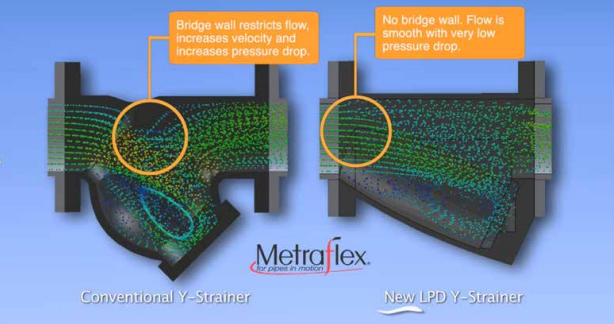
Considering the y-strainer as a critical, energy-saving piping system component
Pumps, chillers, boilers and heat exchangers are the high-profile piping system components targeted to improve energy efficiency. More obvious in their energy consumption, these units are constantly being re-engineered, tested, measured and introduced to the market with improvements that measurably improve energy savings.
Other low-cost components in the system are routinely plugged into a design, accepted for their role in creating pressure drops and turbulence since there are no alternatives. One of these components is the strainer.
Today’s traditional strainer design was actually introduced over 100 years ago. The strainer was created to protect expensive equipment, such as pumps, chillers, boilers and heat exchangers by removing debris from fluid before it reached these components. But, a century ago energy consumption was not a consideration and energy efficiency was an unknown concept.
It is now better understood how strainers add pressure top due to their antiquated design and a screen that accumulates debris and increasing pressure loss. This pressure loss translates into pumps increasing energy consumption.
It’s time to consider the strainer’s energy consumption. Download this technical whitepaper to learn how the new LPD y-strainer has been redesigned ‘from the ground up’ to provide superior pressure drop.